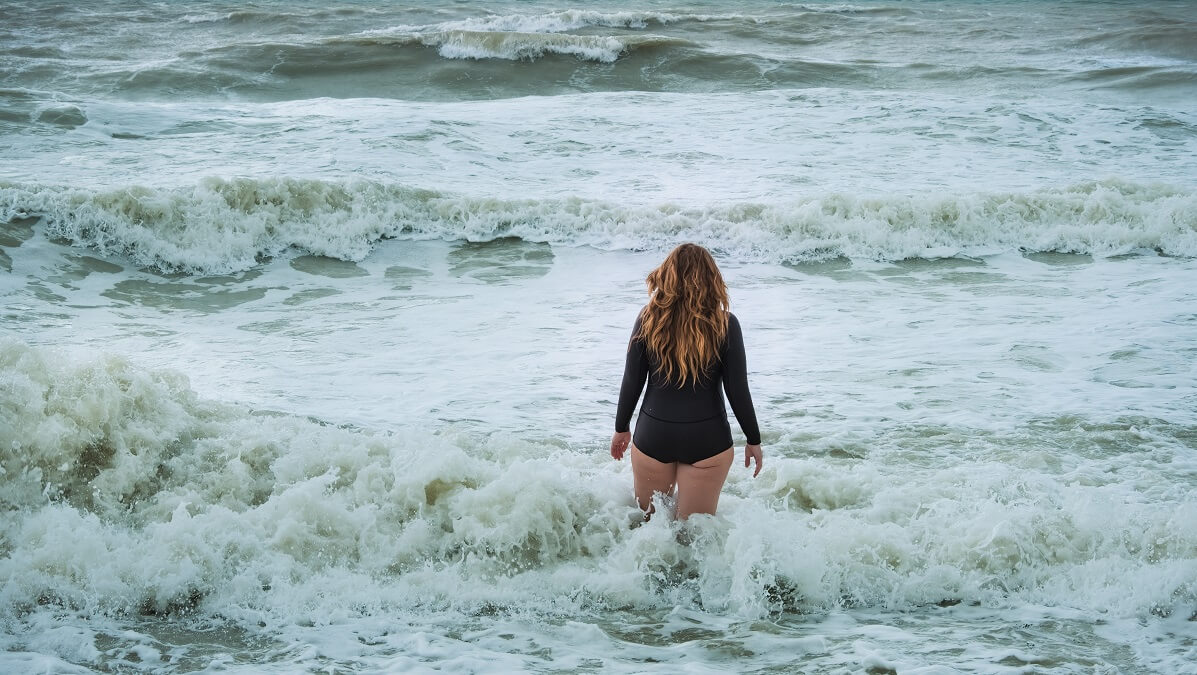Does the thought of an icy water swim in the middle of winter excite you? Does the phrase ‘brown fat’ conjure up nice images?
If you’re anything like me, your answers to both questions will be a resounding, “No!” But the two combined may provide a path to weight loss and an answer to obesity.
According to Professor Camilla Scheele, from the University of Copenhagen, the latest scientific evidence suggests cold water swimming could help play a role in shedding kilograms.
So where does the not very nice-sounding ‘brown fat’ come in?
Well, let’s start by giving it its proper name, the slightly more palatable ‘brown adipose tissue’. This particular type of tissue differs from regular ‘white’ fat in that it is ‘switched on’ when exposed to low temperatures.
Read: Health benefits of swimming
Once activated, brown adipose tissue produces heat, which in turn warms your body, helping to protect you against the cold to which you have subjected yourself. And basic physics tells us that to produce heat, we need to burn energy.
That leads us nicely to a seemingly growing number of people who ‘indulge’ in a winter swim in icy waters.
Sydney is known for its Bondi Icebergs and Coogee Penguins, while in the even colder winter climes of Melbourne, the Port Melbourne Icebergs and the Brighton Icebergers are two of the groups that take the plunge.
In Scandinavia, though, where winters make Melbourne’s feel like summer, it’s been a popular pastime for decades. Most who partake swear by its recuperative powers, and the brown fat equation backs them up.
Prof. Scheele, who was in Melbourne for the World Obesity Congress, said the exact interaction between ice swimming and weight loss was still not fully understood, but research she led has found a compelling link between the practice and improved health outcomes.
Read: Why eating late at night is so bad for weight loss
That research involved a comparison of two groups of Danish men – one that practised winter swimming and the other, a group of identical age and fitness levels, that did not.
Prof. Scheele found that the winter swimmers coped better with immersion in cold, produced more heat and consumed more energy.
“Our results point to winter swimming as an activity that could increase energy expenditure, thus proposing a new lifestyle activity that might contribute to weight loss or weight control,” said Prof. Scheele in her recent visit.
Read: Things you only know if you love wild swimming
In an article Prof. Scheele co-wrote with her colleague Jo B. Henningsen last year, she highlighted the hypothalamus, a structure deep in your brain, as playing a major role in the process.
Brown adipose tissue, the article says, “is regulated by multiple interactions with the hypothalamus from regions overlapping with centres for feeding behaviour and metabolic control”.
That may be one of the reasons that, as yet, they have found no convincing evidence for weight-loss effects of cold-activated human brown adipose tissue.
Nevertheless, most regular ‘icebergers’ claim to feel physically and mentally healthier as a product of their cold-water cavorting.
It sounds convincing, but for some reason the prospect of diving into frigid waters still gives me cold feet.
Have you taken the plunge and done some winter swimming? Would you consider doing it? Why not share your experience and thoughts in the comments section below?


Please note that the research as referred to here is by no means definitive and is just a “good” theory. The fat that is being discussed is the brown visceral fat that is stored within the abdominal cavity. I recall reading German research discussion well over a decade ago that linked the brown fat to thermoregulation of the body. It is more prevalent in men than women as when fat is stored, in women this goes first to their overall body subcutaneous layer white fat whereas in men, as there is no subcutaneous layer, it is diverted to the abdomen for storage, deposited as brown fat.
The German research suggested that the trigger for the use of these deposits for warming the body was extended exposure to temperatures below 15 degrees C.
As a weight loss exercise of working naked or lightly clad in your garden in winter there is no proof that you will slim down and have a trimmer tummy by the time spring arrives, but the outdoor exercise may be good for you in otherways. Discretion is advised as not everyone who can see you in your garden may find you visually appealing. (Or entertaining.)